Meet the Native American Farmer Promoting Northern New Mexico’s Indigenous Foodways
A cooking class at The Feasting Place provides a small glimpse into pueblo life.
Meet the Native American Farmer Promoting Northern New Mexico’s Indigenous Foodways
A cooking class at The Feasting Place provides a small glimpse into pueblo life.
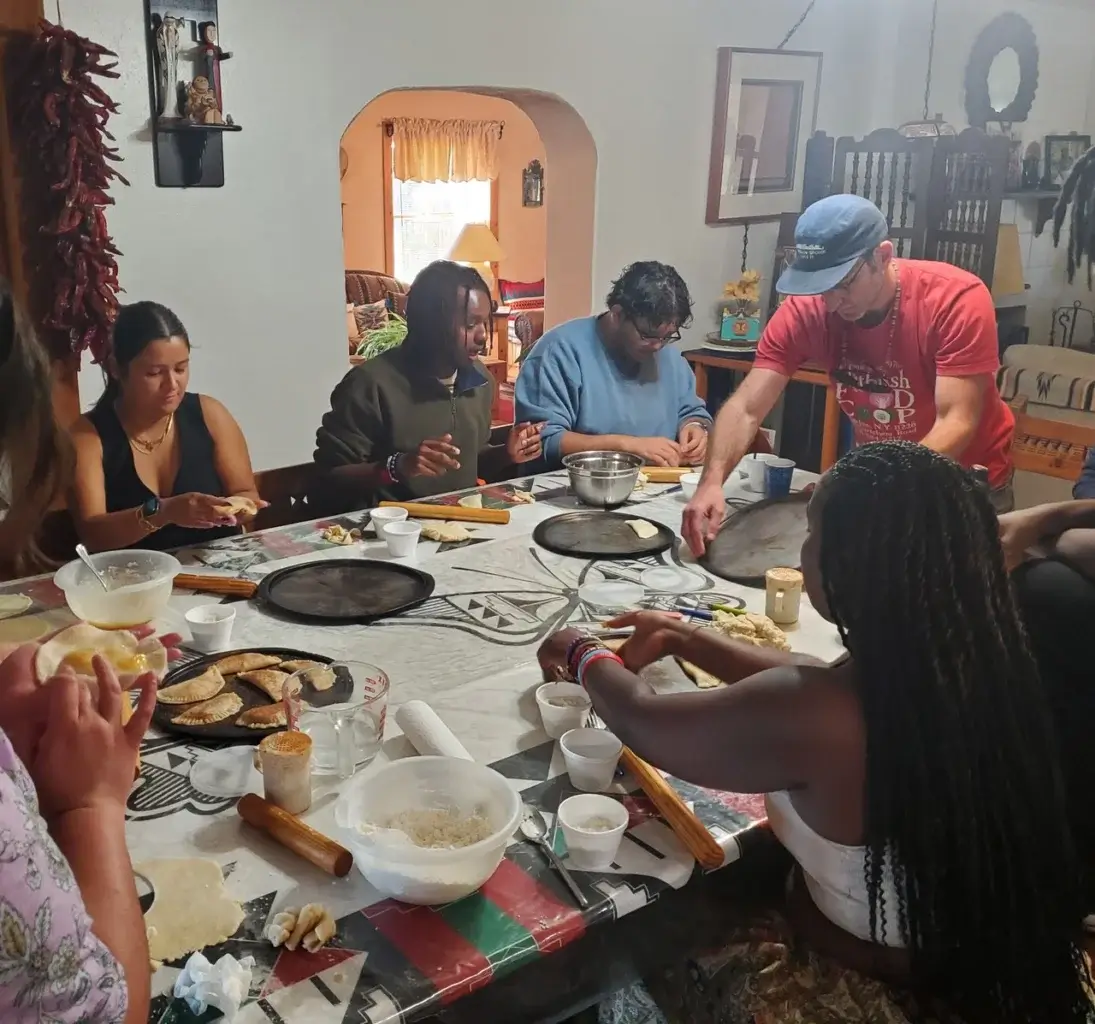
From left: Jatziry Macedo, Rhoman Elvis, Fausto Flores Alvarez, Mark Stern, and Endré Cattouse eat at The Feasting Place.Photos by Laurel Miller.
The aroma of cedar smoke fills the early autumn air, punctuated by the crackle of wood as Norma Naranjo rakes out hot ashes from the horno, a beehive-shaped adobe oven, with a long wooden paddle. She piles the ashes on the ground and tops them with glossy green chiles from her garden; the heat will concentrate their flavor for later use in a stew.
Naranjo is the founder of The Feasting Place, a culinary and cultural program based out of her home on the Ohkay Owingeh (“Place of Strong People”) Pueblo in Española, New Mexico, thirty minutes north of Santa Fe. A pueblo refers to Native Americans of the Southwest who live in permanent settlements. The Pueblo peoples are largely agrarian in nature.
LEARN MORE
How to build a calorie-dense garden.
A Vietnam War veteran and former social worker, Naranjo established The Feasting Place in 2000, motivated by her desire to educate the public about traditional Ohkay foodways and culture. Many of her students are children from local schools and her own and other pueblos, but she also works with tour groups, local hotels, and universities.
“Historically, we were a farming culture,” says Naranjo. “We grew our own food, we were active. As kids, we’d plant, hoe, and harvest, and go out to irrigate the garden after dinner. What do our kids do now? They’re on their phone or watching TV, and their parents work and get fast food because they have no time to cook.”
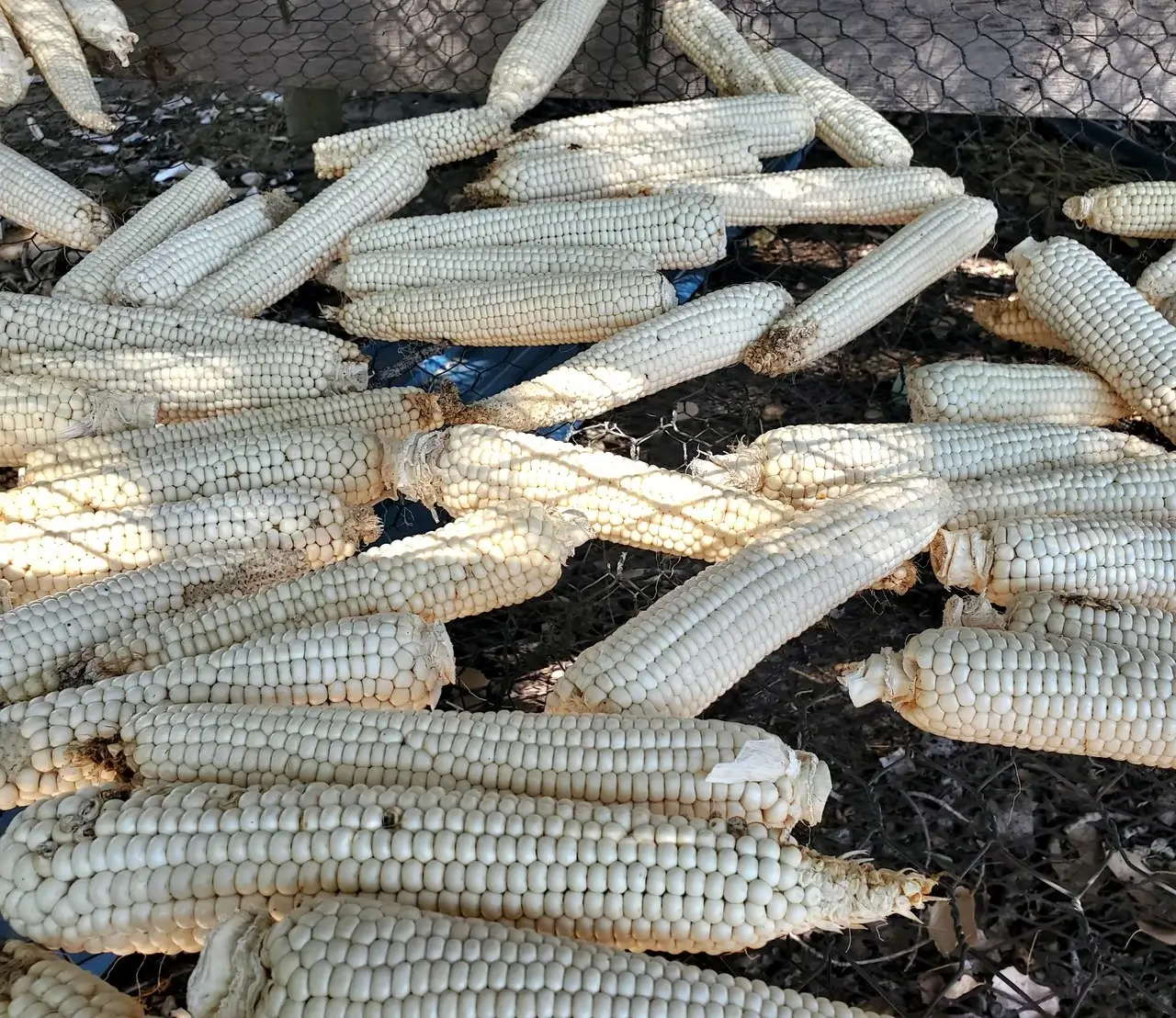
Naranjo and her husband Hutch cultivate chicos (a type of corn that is dried, steamed, and rehydrated for stews or as a side dish), tomatoes, watermelon, and the three sisters (the Native American trinity of squash, corn, and beans, which are grown as symbiotic companion plants; chiles are often referred to as the little sister, as they were introduced with the arrival of the Spaniards). Hutch, who is from the nearby Santa Clara Pueblo, builds hornos for local clients and businesses and raises grassfed Angus beef.
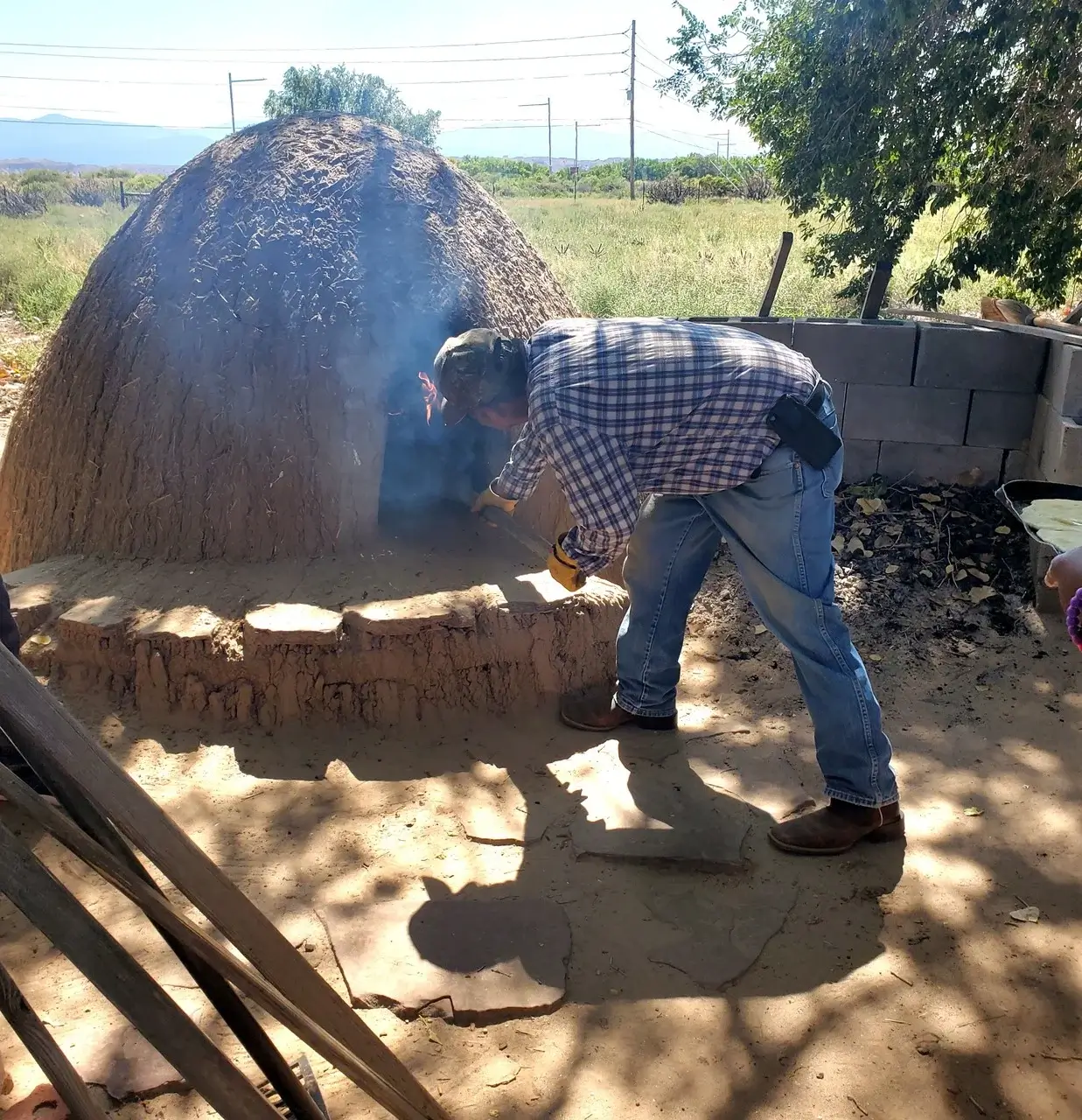
On this day, a group of nine students from Colgate University, a prestigious liberal arts college in Hamilton, New York, are taking the first of three cooking classes from Naranjo. The classes are part of the curriculum for an immersive, semester-long off-campus scholar’s program based in Santa Fe. Most are first- or second-generation immigrants and one student is Native American, of Onondaga heritage.
“The participants are first-generation college students who have overcome historical, structural, or personal obstacles in their lives and were able to find their way to Colgate,” says Mark Stern, the program’s academic director. “Santa Fe is unique for our off-campus study options because we’ve cultivated relationships of reciprocity with local pueblos, which allows our students to learn with and from Native American scholars who offer perspectives and cosmologies about ideas that challenge the core of, for lack of a better term, Western epistemology.”
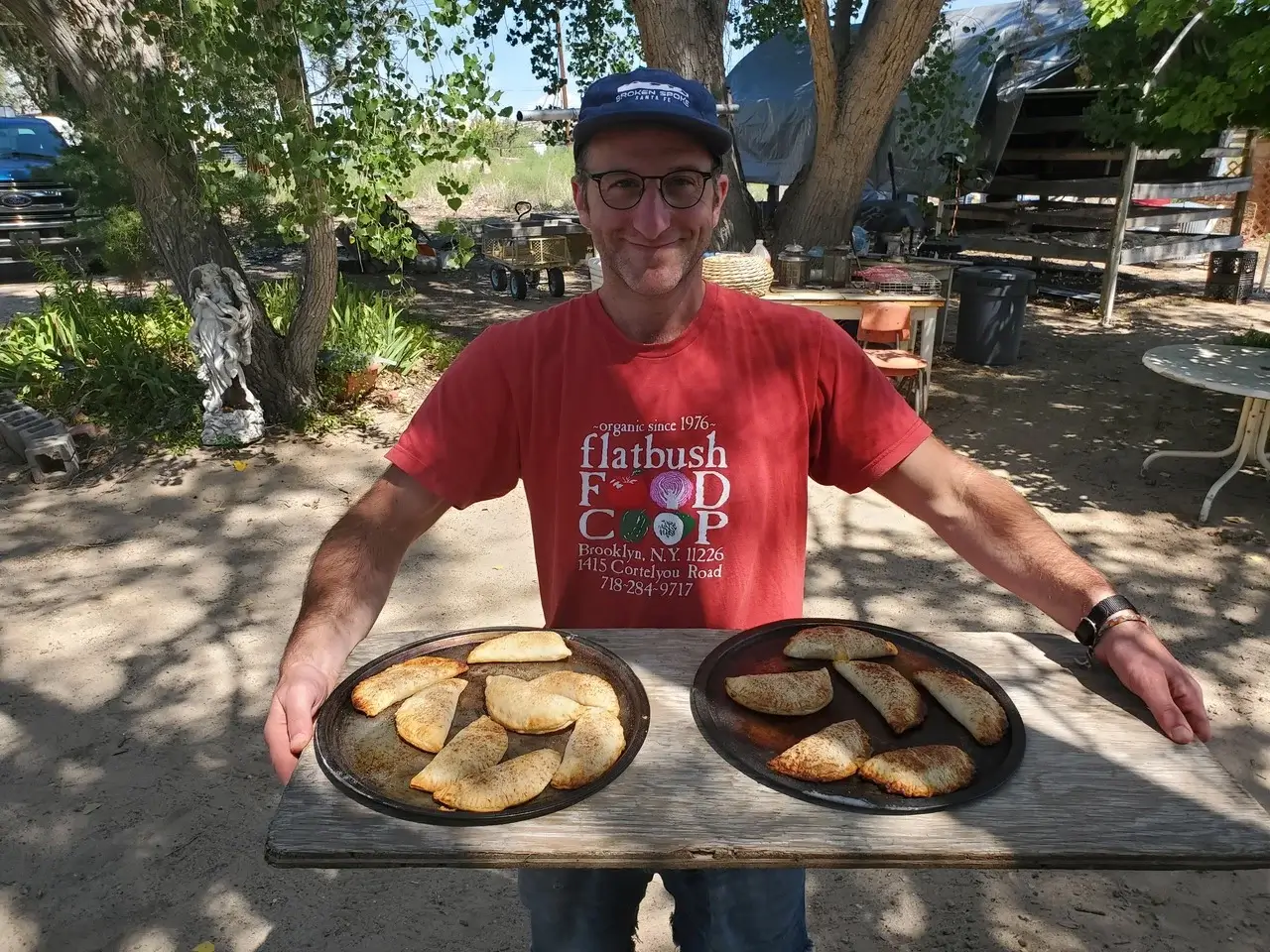
Stern learned about the Naranjos from two of the program’s instructors, who are from local pueblos. “Norma and Hutch were highly recommended when I asked who might be able to talk to us about pueblo food,” he says. “My experience suggests that students don’t want to be staring at screens all day; they want to be learning experientially, and The Feasting Place provides that.”
The first three-hour class begins with Naranjo and her sister, Tomasita Duran, providing a history of the 700-year-old Ohkay Owingeh Pueblo, which has a population of 2,700 members, in addition to 5,000 non-tribal members. At one time, Ohkay was also the state capitol.
Like most of New Mexico’s pueblos, Ohkay generates revenue from its casino, gas stations and other businesses, but some, like the Pojoaque, Picuris, and Taos pueblos, raise bison as part of a federal conservation effort that also helps widen the genetic diversity of established herds and provides the pueblos with a traditional food source. When Naranjo teaches youth classes at Pojoaque, she barters classes in exchange for bison meat.
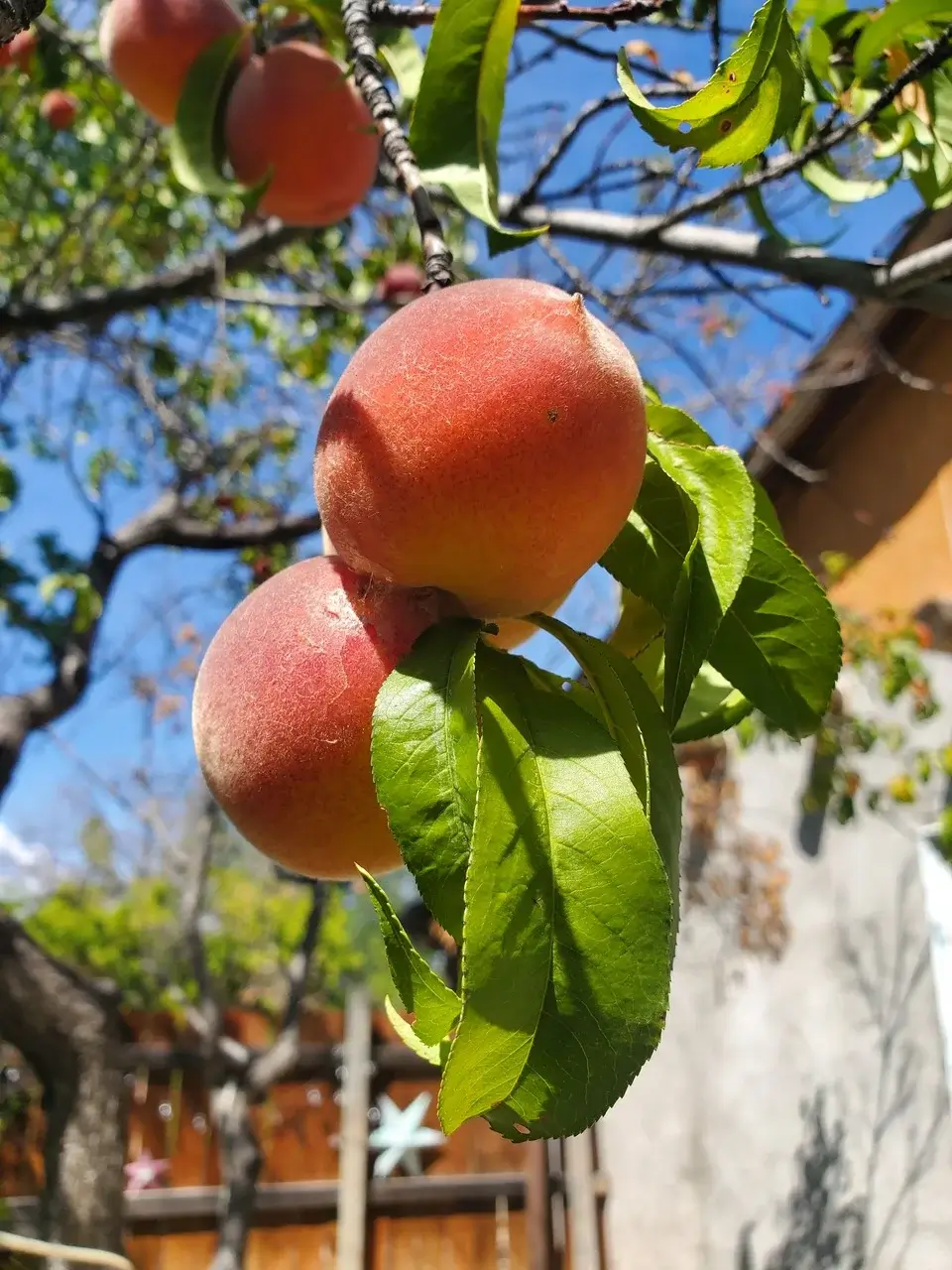
Naranjo wants The Feasting Place to encourage younger generations on the pueblos to make healthier food choices by returning to a more traditional diet in favor of processed foods; she has even authored a cookbook, The Four Sisters: Keeping Family Traditions Alive.
“At one point in time, we were ashamed of who we were as native people,” she says. “But now, you see more of our young people participating in dance and other cultural activities and learning our ways including a return to planting and preparing their own food.”
New Mexico is also a tri-cultural state, a merging of Native American, Spanish, and Mexican influences that have parlayed themselves into a distinctive native cuisine that makes use of Indigenous, as well as Old and New World ingredients such as potatoes, corn, chiles, and tomatoes. The Spaniards also introduced wheat to the pueblos, and taught the native peoples to bake using hornos, which are of Moorish origin.
For today’s class, the students are making empanadas filled with peaches and apples from the Naranjo’s trees and Indian tacos made with fry bread. As an appetizer, Norma shows the students how to make and knead dough for what she calls, “pizzas, res-style,” which are cooked in the horno. “You’re not in New York anymore; this is Indian Country!” she says, eliciting laughs.
After prepping their dough and topping their thin-crusted pizzas with tomatoes, herbs, and other produce from the garden, the group moves outside for an horno demonstration from Hutch. “You’re learning to bake the way it’s been done for 500 years,” he says, showing them how he builds a pyre of cedar wood, which he collects from Santa Clara Canyon, in the back of the oven.
The horno needs to be 700 to 800 degrees Fahrenheit to ensure a sufficiently crisp crust; Naranjo uses a rolled-up newspaper as a temperature gauge by thrusting it into the horno, counting to five, and removing it. Its toasty hue tells her the oven is hot enough, so the students take turns cooking their pizzas.
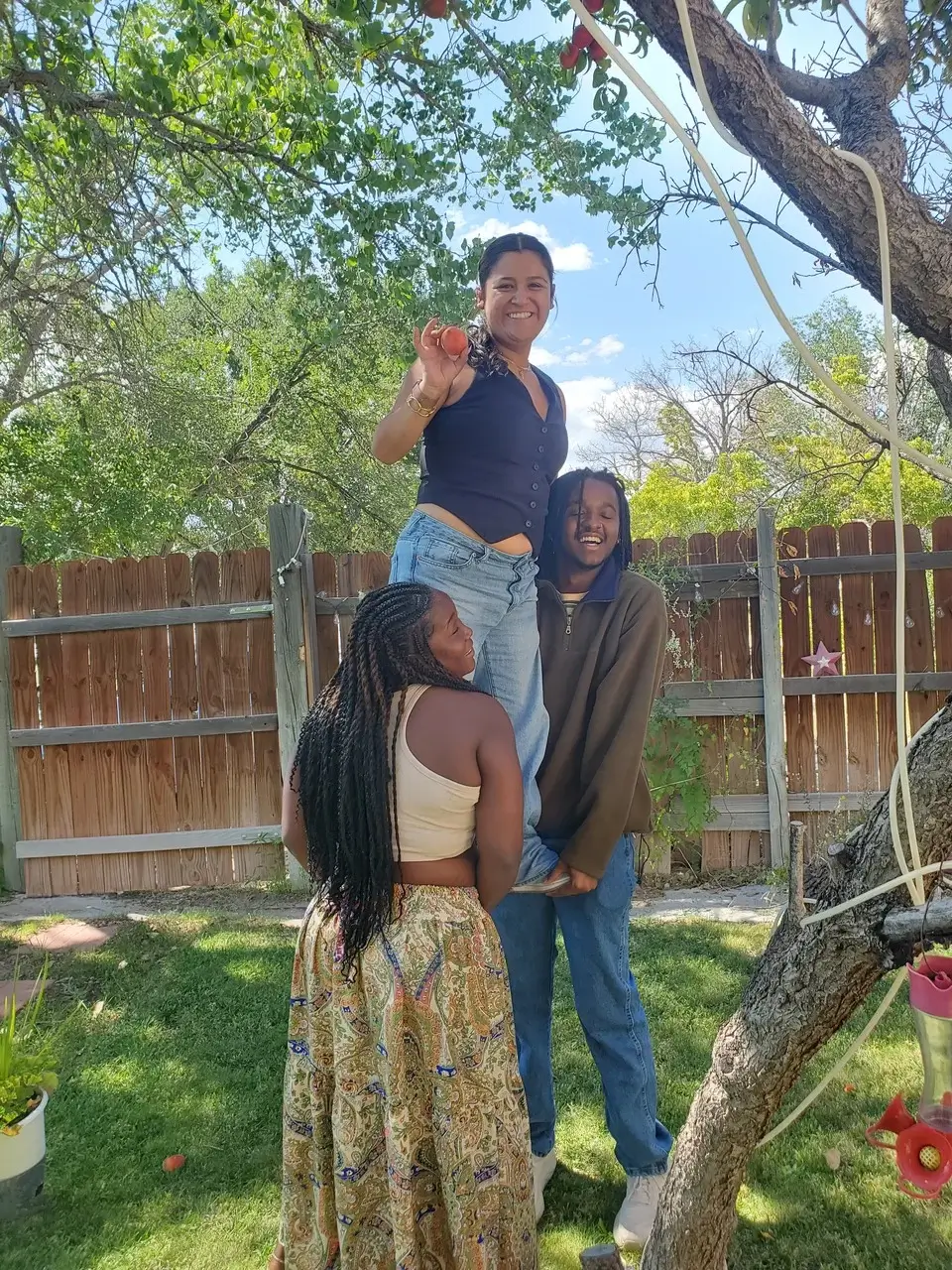
One of them, Fausto Flores Alvarez, mentions that the horno is similar to the mud oven his grandmother uses in his native Honduras. His classmate Endré Cattouse, who is Belizean and of Garifuna heritage, compares it to a Garifuna oven, while the empanadas are nearly identical to Belizean patties.
“I’m noticing a lot of cultural similarities today,” says Cattouse. “One of the best things about this program is that we also learn from one another. When we go shopping, we start talking about our favorite snacks or dishes growing up, and then we end up trying new foods. We bond in a different way than we do at school.”
While the pizzas are cooking, some of the students harvest fruit for the empanadas, which will bake in the horno, while others explore the property, admiring the fresh chicos drying on wood-and-wire racks and visiting the resident chickens. Hutch passes around his freshly ground blue masa, which Norma will use for muffins.
Back in the dining room, the students gather to watch Naranjo make fry bread. She eschews measuring and demonstrates the method her grandmother taught her: by feel. “Norma’s hands have all of the information she needs,” says Hutch. “You lose the feel when you rely on recipes.”
READ MORE
The 1,000 mile journey for a newborn calf.
While lard is traditional for pueblo baking, Naranjo uses Crisco (“I buy it by the truckload!”) for classes because it’s suitable for vegetarians and vegans. As she shows how to knead the dough, one of the students asks why she makes Indian tacos—which today will be filled with the Naranjo’s ground beef, beans, and garden produce—due to its associations with colonialism.
Naranjo acknowledges the controversy but explains that the dish is still ubiquitous among pueblo peoples, and enables her to demonstrate a variety of culinary techniques. Also, it tastes good and is symbolic of the Native American fight for survival and freedom from oppression. “But I also believe that we shouldn’t waste our energy on things that happened in the past,” she says. “Focus on the present; that’s how pueblo people are.”
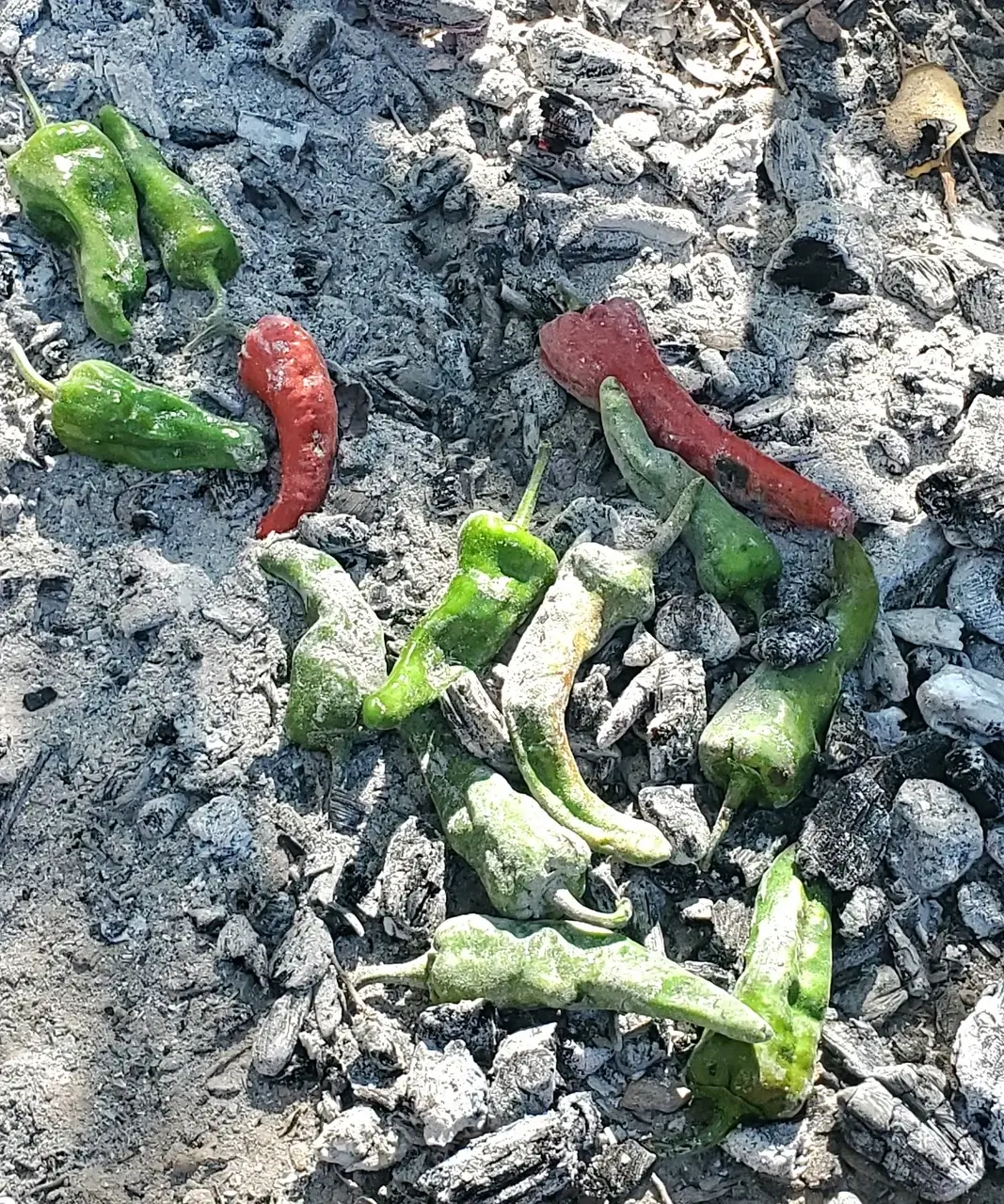
While the menu isn’t comprised of stereotypically “healthy” dishes, it’s a marked contrast to the heavily processed foods available to most Native American communities, and it is designed to utilize fresh, seasonal produce and meat and provide students with life skills as well as basic mathematics, history, and English (Naranjo often asks her younger students to submit essays describing their class experience).
After bidding farewell to the students and inviting them to return to hang out around the firepit- Norma will offer this explanation: “This isn’t just about making money or teaching a class and saying goodbye. Many of our students are far from home and I want them to feel at home while they’re in New Mexico. We’ve even had people stay with us. Food brings people together. It doesn’t matter where you’re from.”
Follow us
This work is licensed under a Creative Commons Attribution-NoDerivatives 4.0 International License.
Want to republish a Modern Farmer story?
We are happy for Modern Farmer stories to be shared, and encourage you to republish our articles for your audience. When doing so, we ask that you follow these guidelines:
Please credit us and our writers
For the author byline, please use “Author Name, Modern Farmer.” At the top of our stories, if on the web, please include this text and link: “This story was originally published by Modern Farmer.”
Please make sure to include a link back to either our home page or the article URL.
At the bottom of the story, please include the following text:
“Modern Farmer is a nonprofit initiative dedicated to raising awareness and catalyzing action at the intersection of food, agriculture, and society. Read more at <link>Modern Farmer</link>.”
Use our widget
We’d like to be able to track our stories, so we ask that if you republish our content, you do so using our widget (located on the left hand side of the article). The HTML code has a built-in tracker that tells us the data and domain where the story was published, as well as view counts.
Check the image requirements
It’s your responsibility to confirm you're licensed to republish images in our articles. Some images, such as those from commercial providers, don't allow their images to be republished without permission or payment. Copyright terms are generally listed in the image caption and attribution. You are welcome to omit our images or substitute with your own. Charts and interactive graphics follow the same rules.
Don’t change too much. Or, ask us first.
Articles must be republished in their entirety. It’s okay to change references to time (“today” to “yesterday”) or location (“Iowa City, IA” to “here”). But please keep everything else the same.
If you feel strongly that a more material edit needs to be made, get in touch with us at [email protected]. We’re happy to discuss it with the original author, but we must have prior approval for changes before publication.
Special cases
Extracts. You may run the first few lines or paragraphs of the article and then say: “Read the full article at Modern Farmer” with a link back to the original article.
Quotes. You may quote authors provided you include a link back to the article URL.
Translations. These require writer approval. To inquire about translation of a Modern Farmer article, contact us at [email protected]
Signed consent / copyright release forms. These are not required, provided you are following these guidelines.
Print. Articles can be republished in print under these same rules, with the exception that you do not need to include the links.
Tag us
When sharing the story on social media, please tag us using the following: - Twitter (@ModFarm) - Facebook (@ModernFarmerMedia) - Instagram (@modfarm)
Use our content respectfully
Modern Farmer is a nonprofit and as such we share our content for free and in good faith in order to reach new audiences. Respectfully,
No selling ads against our stories. It’s okay to put our stories on pages with ads.
Don’t republish our material wholesale, or automatically; you need to select stories to be republished individually.
You have no rights to sell, license, syndicate, or otherwise represent yourself as the authorized owner of our material to any third parties. This means that you cannot actively publish or submit our work for syndication to third party platforms or apps like Apple News or Google News. We understand that publishers cannot fully control when certain third parties automatically summarize or crawl content from publishers’ own sites.
Keep in touch
We want to hear from you if you love Modern Farmer content, have a collaboration idea, or anything else to share. As a nonprofit outlet, we work in service of our community and are always open to comments, feedback, and ideas. Contact us at [email protected].by Laurel Miller, Modern Farmer
November 29, 2024
Modern Farmer Weekly
Solutions Hub
Innovations, ideas and inspiration. Actionable solutions for a resilient food system.
ExploreExplore other topics
Share With Us
We want to hear from Modern Farmer readers who have thoughtful commentary, actionable solutions, or helpful ideas to share.
SubmitNecessary cookies are absolutely essential for the website to function properly. This category only includes cookies that ensures basic functionalities and security features of the website. These cookies do not store any personal information.
Any cookies that may not be particularly necessary for the website to function and are used specifically to collect user personal data via analytics, ads, other embedded contents are termed as non-necessary cookies.
Bravo!
Very beautiful story. ❤️
AMOO